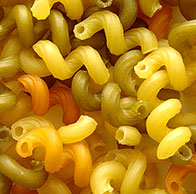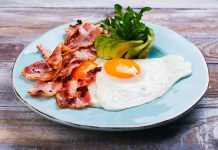 Ancient Greeks called this farinaceous dish “happiness and blessing”. And residents of Apennine Peninsula and Padana lowlands are sometimes ridiculous in their love to pasta. Once, Italian representative at an international fishing competition revealed that the secret of his success was a bait of boiled elbow macaroni. But is it “figure-friendly” to eat pasta? And if yes, what is the best way to prepare it so that you don’t gain weight after eating it regularly?
Ancient Greeks called this farinaceous dish “happiness and blessing”. And residents of Apennine Peninsula and Padana lowlands are sometimes ridiculous in their love to pasta. Once, Italian representative at an international fishing competition revealed that the secret of his success was a bait of boiled elbow macaroni. But is it “figure-friendly” to eat pasta? And if yes, what is the best way to prepare it so that you don’t gain weight after eating it regularly?
Does Pasta Make You Fatter or Slimmer?
Spaghetti, penne, farfale and the other kinds of pasta are still a hot topic of discussions among dieticians. On the one hand, pasta opponents argue this food is fattening while pasta advocates, on the other hand, insist the view of pasta being harmful to the figure to be no more than a myth that should be discarded once and for all. Anyway, we can rely on the experience of professional athletes.
Dietary Pasta Recipe for Athletes
Pasta with seafood is a number one item on the diet list of Italian basketball team. Italian Winter Olympic Games team has a specially created diet of pasta with nuts, beans and oatmeal. Here’s another recipe of pasta with beans and mussels, a very tasty dish which is also figure-friendly – Recipe of Pasta with Beans and Mussles.
Hard Wheat and Soft Wheat Pasta
When choosing and cooking pasta, one has to consider some pasta characteristics. Pasta is made from two kinds of wheat that differ in their carbohydrate structure –hard wheat and soft wheat. Due to special wheat grinding process, hard wheat pasta contains complex carbohydrates with a minor influence on the blood glucose level. Soft wheat pasta triggers real “sugar boom” in blood, resulting in extra pounds.
Why Hard Wheat Pasta Is Good for You
Hard wheat pasta is a source of vegetable protein, vitamins B and F, and fiber that helps to remove toxins from our body. This kind of pasta is figure-friendly.
How to Cook Figure-Friendly Pasta Correctly?
Overcooking leads to 1.5-fold increase in pasta’s glycemic index (the indicator of blood sugar fluctuation). Here is some useful pasta cooking tips from Italian cooks. To cook 100 g pasta, you need 1 liter of water. Add salt as soon as water has boiled, but before you drop pasta in. Immerse spaghetti into water only at the right angle. Never rinse cooked pasta under cold water or dress it with any animal fats. Just drain water using colander and dress with a sauce or high quality olive oil.










